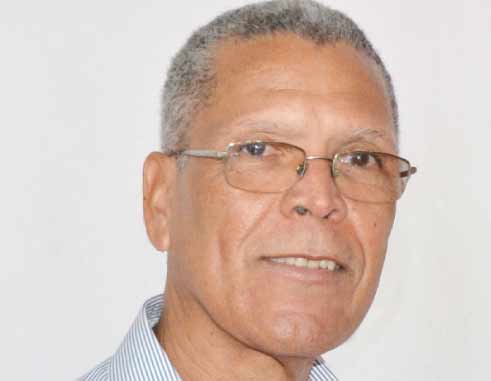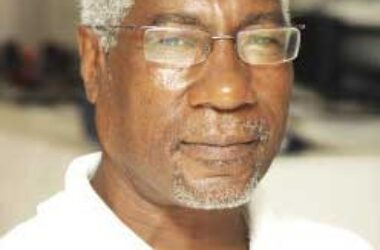
THE caption is a movie adaptation of how astronauts on that ill-fated Apollo 13 mission reported a life-threatening crisis to ground control. For us, it’s that economy-threatening double vision problem again, but “ground control” doesn’t seem to be listening.
Last time we had our eyes examined, we were seeing double roadway widths between Choc and Gros Islet, and a doubling again of this highway with the proposed new highway from Dennery to Gros Islet.
Now, our double vision is leading us into a $64 million dollar debt trap with the doubling of the administrative office provisions for Vieux Fort. Even as the NIC is constructing this 75,000 square foot edifice, the Corporation owns a building in Vieux Fort, constructed years ago for just the purpose that this new building is to serve – access to public services for the people of Vieux-Fort and surrounding areas.
The existing building may or may not be perfectly suited to its current purpose, but it would have been thought that in these difficult economic times some up-grading would have been sufficient. Not so, a $64 Million new building is apparently required, while the rationale provided for this only suggests that further duplication can be expected in Soufriere and Gros-Islet.
According to the press release from the PM’s office, this is why the country needs this building:
“We also have to make some giant strides in the administration of this country. We are managing a country that it (sic) too centralized. Our citizens have to travel to Castries to secure basic services. It cannot be right that someone requires a civil status record and they must pay a bus to travel to Castries, pay a bus to come back down, pay a bus to see whether the record has been prepared, reach up there, it’s not prepared, pay a bus, come back down, and it’s a never ending story. Other countries, huge countries, large countries, have been able to decentralize basic services. For some strange reason, here in Saint Lucia, despite our size, we have not been able to accomplish this.”
As we gather, we first need this $64 million building “to make some giant strides in the administration of this country”.
Then we need it so that our citizens in the south can avoid numerous futile trips to Castries to collect birth certificates, an inconvenience that can firstly be resolved by a phone call to the civil status registry, and secondly, an inconvenience that should largely have been resolved with the up-grading of that registry. Also, as we understand it, civil status documents for residents of the south have routinely been delivered in Vieux Fort for years.
But it is the last implied question that proves most helpful as we try to understand why this complex is being built. In effect, the quoted press release seeks the answer to why “huge, large countries have been able to decentralize their services, but St. Lucia has not.” The answer to that question is simple – we can’t afford it.
The most basic reason for us not building $64 million administrative buildings anywhere and suggesting that they be duplicated at other locations on the island is that we’re “broke”. We simply cannot afford it, and we’ve been told so time and again by the Prime Minister himself.
The 2013 Budget Statement makes this point, the Prime Minister stating “However, it is clear that the current fiscal situation does not allow the government to borrow to construct new offices”, indicating that government would seek to enter partnerships with the private sector through either BOLT or joint venture arrangements for such construction. No explanation is however provided as to how these arrangements avoid the issue of government borrowing.
The Budget Statement of 2014 emphasizes our inability to borrow, the Prime Minister stating that “There is no window for increased borrowing through bonds.” That Statement also indicates that the BOLT mechanism was being proposed for the financing of three office buildings: a new office for the Prime Minister at La Toc, a new office complex in Castries, and a third building which was not identified.
The 2015 Budget Statement makes no mention of any of the buildings referred to in the previous two budget statements, but in the section on financing of roads it provides some insight into government’s thinking.
Having advised on a new Southern Roads Rehabilitation Project to be financed by a Design/Finance/Construct agreement in the amount of $29 million, that 2015 Statement further indicates that in the previous financial year, government had paid $15 million to Design/Finance/Construct contractors. It then advises that “this means that we have space to utilise this amount without increasing our debt stock.”
These budget statements, taken together, produce a troubling picture. Firstly, with government having declared its inability to raise financing by the sale of bonds to the private sector, what could possibly have induced the private sector to engage in financing government infrastructure through DFC contracts?
Secondly, how did government finance that initial $15 million payment to the DFC contractors? Because, if it was not from grant funding, then it would have had to come from revenue. But in 2014 the recurrent deficit was $57 million, part of which would have been due to that $15 million payment, and the only way to finance a fiscal deficit is by borrowing.
What then could have led the government to spend another $15 Million with the suggestion that this expenditure would not result in a further increase of our debt stock?
Now we are told that that new $64 million administrative complex is no longer to be financed by BOLT or DFC mechanisms with the private sector, but by the NIC. This may have allowed the government to escape the issue of private sector financing of increased debt, but unless government does not intend to pay rental to the NIC, that debt will show up as an increased fiscal deficit for which the country will again have to borrow.
To put this new building into perspective, a 75,000 square foot building can conservatively accommodate over 400 office workers. And at a cost of $64 million dollars, it is being constructed at a cost of $853.33 per square foot. Maybe it’s gold-plated too.
At a time when we should be seeking efficiency in the public service and finding ways to minimize its cost, we are instead indulging in massive expenditure on the fickle claim that residents in the south are inconvenienced when they want to get a birth certificate.
Not to mention that brand new office building constructed by NIC at Point Seraphine which has remained empty for the last two years.Or the proposed new offices for the Prime Minister at the Golden Hope complex.
Meanwhile, the very public servants who are to provide these services are told that they cannot get salary increases for three years because there is no money to pay for it.
While the government repeatedly tells us that it cannot borrow to construct new office buildings, it seems to have embarked on a spending spree to accomplish just that. Yet, we all know the list of essential buildings that have now been under construction for years and remain incomplete.
We have a problem, and we can only hope that we come to our senses before we have to call in the ultimate in “ground control”, the IMF.














